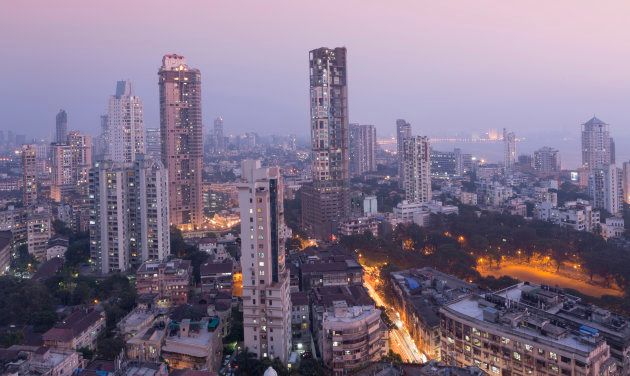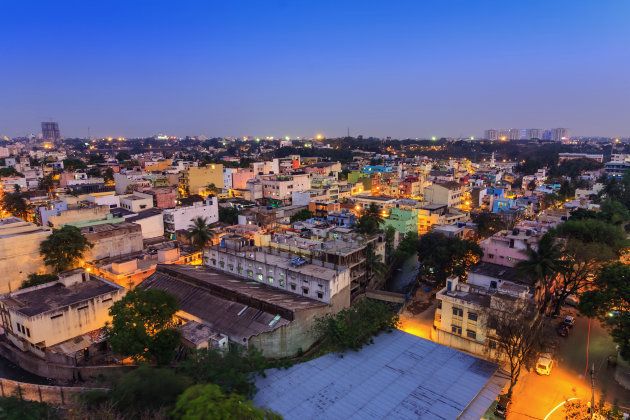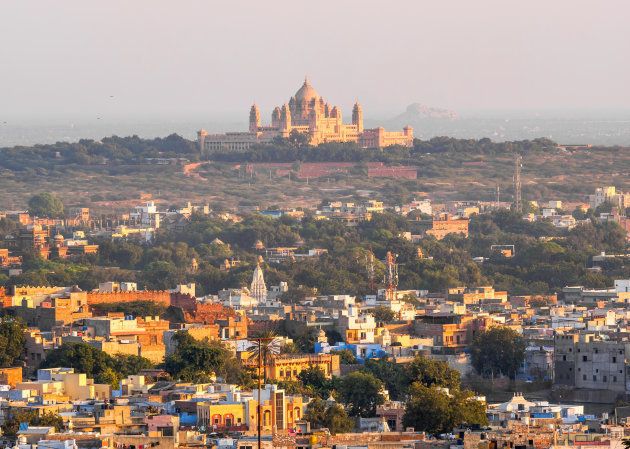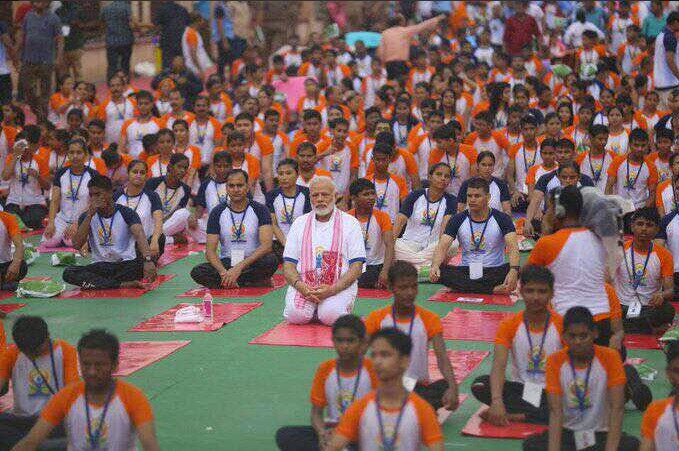
News that no Indian city made it anywhere close to the top of the latest list of most liveable cities in the world gets routinely buried in the inside pages of most newspapers. On the Internet too, such news does not figure high on the home pages of search engines, a sure way for the report getting buried somewhere deep in the cyber abyss.
It was no different this year too when the Economist Intelligence Unit (EIU) released its latest annual rankings recently. Though for trackers of India's fortunes, it was a matter of relief that our cities did not also figure at the bottom of the list, the honour going to our estranged western neighbour, Karachi being ranked 134 in a list of 140 cities. Dhaka, the capital of the not-so-unfriendly Bangladesh, was even worse at the 137th position.
For those with an eye for precise details, New Delhi was 110th and Mumbai 115th by the 2015 report and the current rating is available for a price. It is unlikely that there would be significant alteration in the position of the two Indian cities because the official release listed five biggest improvers and decliners and neither city featured among these.
Earlier, in March, EIU released a listing of world's cheapest cities. I am not sure if status-conscious Indians will find it likeable that as many as four of our cities figured in the top ten. With Bangalore in the 3rd place, followed by Chennai (6th), Mumbai (7th) and New Delhi (10th), India bagged the lion's share of the top spots. Isn't discounted living the antithesis of 'neighbours envy, owner's pride', no longer a mere sales pitch but the credo of the ever-burgeoning Indian middle-classes?

Conducting surveys is chiefly a business activity and EIU is the not the only institution engaged in listing liveable cities. There are at least two other annual listings: Monocle's Most Liveable Cities Index and Mercer's Quality of Living Survey. While Monocle is a British magazine, Mercer is a global consulting firm. Whereas the former limits itself to picking just 25 cities by pecking on variables ranging from price of a coffee to design schools in the region, the latter is more voluminous and offers comprehensive comparative information and data on a wide range of parameters of over 450 cities, including rankings of more than 230 cities. The raison d'être of different surveys vary from snazzy comparisons of cities targeting audience most likely to visit these to providing companies with facts to compensate employees when the latter are posted in other countries.
EIU, the most highbrow of these surveys, assesses locations on the basis of the best or worst living considerations. It weighs up liveability on five broad parameters: stability, healthcare, culture and environment, education, and infrastructure. Cities are rated as acceptable, tolerable, uncomfortable, undesirable or intolerable. Absence of a nuanced rating system stems from how the surveys are used — to either benchmark perceptions of development levels or calculate the extent of hardship allowance that needs to be awarded to attract talent to work in these cities. The greater the hardship, the higher the compensation. I have not come across instances of the government utilising survey information to improve its services and facilities.
Critics of these ratings argue that such appraisals are based on how 'outsiders' see the cities and that the 'locals' and their needs are completely absent. Undeniably, support for such surveys come from firms who require to calculate 'hardship packages'. Over the years, these surveys are also used by people in white-collar positions while considering moving to other cities.
Liveability of a city depends clearly on how you measure it. Should a city be considered more liveable because it has more walkways and bikeable suburbs while being less car-dependent? How much emphasis should be laid on public transport and diverse parameters that influence people's quality of lives: nutrition, education, health, environment and sanitation?

In India, in contrast to the global 'rankings and survey industry', so far there was little support to ensure institutional consistency. Cities are occasionally compared with one another either by mainly web-based small media outfits who are not transparent about the methodology used to reach the conclusions. Larger media groups commission these surveys only when they are certain of bagging several advertisements to make a big spread. Magazines come up with special issues, but these have narrow focus and do not assess chosen cities on multiple parameters, leaving the result severely inadequate.
The need for policy planners and stakeholders to have more information about our cities has enlarged in the recent years. The pace of urbanisation in India is rapid, to say the least. Satellite data used in the second volume of the Economic Survey indicates that the extent of urbanisation in India is far greater than is assumed so far. This government has embarked on an ambitious Smart Cities project.
In many ways, this is a political necessity as the politics of the Bharatiya Janata Party, and of Prime Minister Narendra Modi especially, get incubated with greater rapidity in urban areas compared to rural India. Though there may not be a direct cause and effect relationship, but a key initiative launched by Vice President M Venkaiah Naidu, when he was still Union Minister for Housing and Urban Affairs, was the 'City Liveability Index' for measuring the quality of life in 116 major cities, including smart cities, capital cities and cities with a population of above one million.
In June, the ministry kickstarted the process of shortlisting consulting firms to assess the chosen cities. Naidu declared that his ministry had formulated a Common Minimum Reference Framework to enable the cities to know where they stand in terms of quality of life and the interventions for improvements. A total of 79 indicators were identified and grouped in four primary areas: institutional, social, economic and physical. The main idea behind the initiative is to determine the extent and quality of infrastructure, including availability of roads, education and health care, mobility, employment opportunities, emergency response, redressing grievances, pollution, availability of open and green spaces, and, most significantly, of cultural and entertainment opportunities.
The ministry-backed Liveability Index, when it becomes a regular feature, will add to the ministry's survey on cleanliness, released annually as Swachh Survekshan. Its latest report, released in May, it listed Indore, Bhopal, Visakhapatnam, Surat and Mysore as the cleanest cities in India, while East Delhi, Anantnag, Thanjavur, Hubli–Dharwad and Nalgonda were the dirtiest among the 200 cities rated. The survey gives a sense of pride to the citizens of the cities at the top of the list and makes them stakeholders in the campaign. By going beyond this survey, the government has warded off criticism that Swachh Survekshan was started only for its centrality in the prime minister's list of 'achievements'.

The indicators framed under the new scheme range from percentage of citizen services available online, its command mechanism and usage, restoration and reuse of historical buildings and ecologically important areas, cultural and sports activities, school enrolment (of girl-children, especially), quality and extent of digitisation of educational activity, health facilities like hospital beds and patient-doctor (and healthcare worker) ratio, the extent of surveillance devices in public areas, crime rate, and transport facilities. One can only quibble that it would been appropriate if cities were also compared on the basis of their efforts to break barriers between different communities and integrate people with one another.
The indicators also will aim to assess tax collection and business activity, besides tracking unemployment rate and migration. This initiative has the capacity to provide adequate information to truly make Indian urban spaces more liveable. Backed by the World Bank and estimated to cost anything between ₹15-20 crore annually, the project — part of the ministry's programme of Capacity-Building for Urban Development — is currently work-in-progress.
Normally, adequacy or insufficiency of urban facilities is a neglected part of our social discourse, except during stress conditions in a nation preoccupied with political rhetoric. However, progress on this index must be tracked to ensure that the initiative does not lose steam or direction. The process of collecting data will be mammoth and spread over several months, but it will fill a colossal void about how a large number of Indians live. When the first Index is released, and later becomes a recurring feature, the survey hopefully will no longer continue making a fleeting appearance in the media like the EIU or other surveys. This is more substantive a plan and keeps 'local' issues and people in the epicentre.
Also on HuffPost
